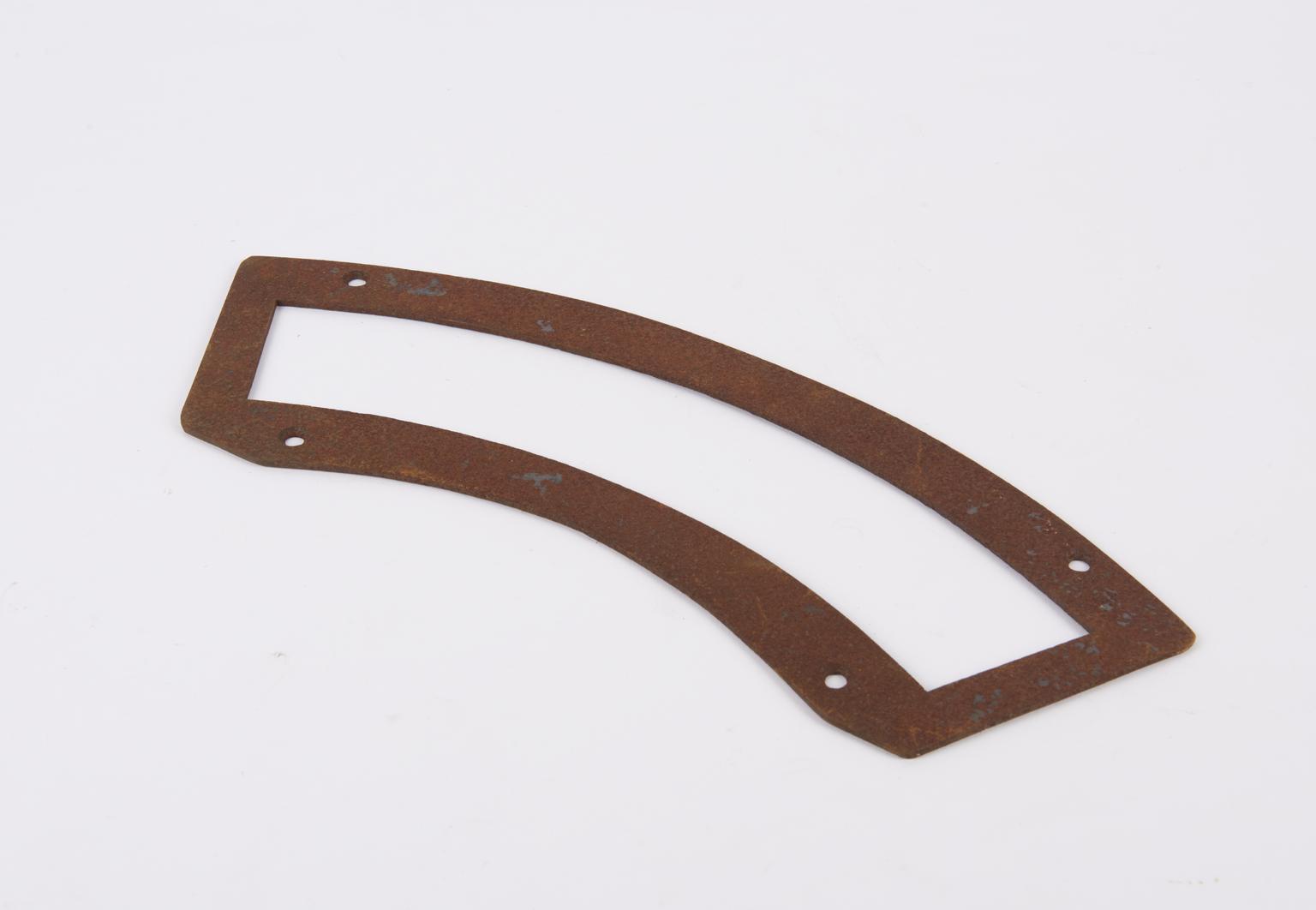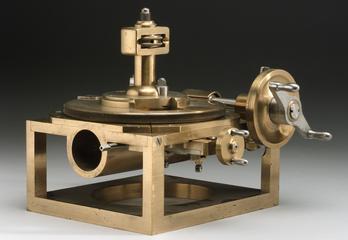Pantograph engraving, milling machine and accompanying parts, 1865, associated with geometric lathe by Bryan Donkin and Co., c.1821.
This machine was was constructed by Bryan Donkin and Co. in 1865, and its main purpose was to mill the bronze blocks which ultimately formed the interlocking compound security printing plates which were engraved with complex mathematical patterns by Donkin's 1821 geometric lathe (inv. 2008-26). Initially, the bronze blocks were cast bronze, but a better and more accurate fit between the two could be reached if they were milled instead. This machine was adapted from a planing machine previously used by Donkin in the construction of papermaking machinery. Thereafter, both machines, the lathe and pantograph, worked until the 1950s in conditions of closely-guarded secrecy.
The pantograph differs fundamentally from all other known machine pantographs; rather than the pantograph arm, or ‘scissor’ carrying a tool and stylus over the work piece and template, it performs the opposite function of moving the workpiece and template under the fixed tool and stylus. This scissor closely resembles the reduction mechanisms used by draftsmen and cartographers of the late eighteenth and early nineteenth centuries, further evidence of its early and unique development.














